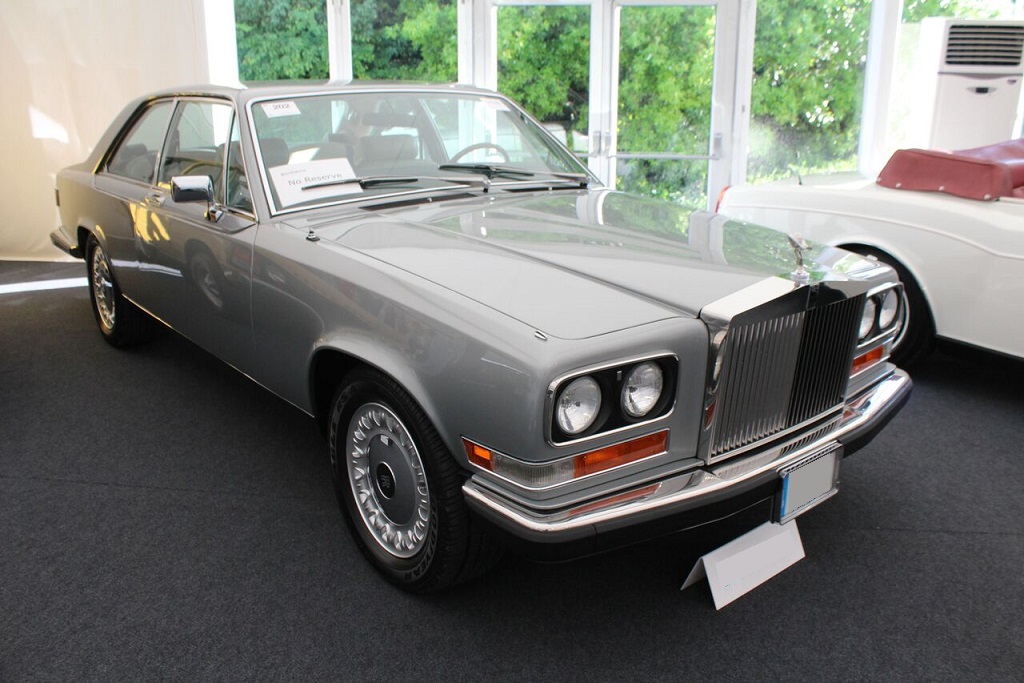-
Insurance
InsuranceAbout our productsLearn about insuringGet a quote Get current values, historical values, model history and more.
-
Valuation
ValuationHagerty valuation toolLook up a vehicle value Get current values, historical values, model history and more.
-
Events
EventsHagerty official eventsHagerty ClubhouseEvent calendar
-
Entertainment
EntertainmentMore to explore
- Portal login
1985 Rolls-Royce Camargue
Base FHC 6.8 L
Vehicle values by condition
Fair
Condition 4
£25,100
#4 cars are daily drivers, with flaws visible to the naked eye. The chrome might have pitting or scratches, the windshield might be chipped.
Good
Condition 3
£41,400
#3 cars could possess some, but not all of the issues of a #4 car, but they will be balanced by other factors such as a fresh paint job or a new, correct interior.
Excellent
Condition 2
£53,800
#2 cars could win a local or regional show. They can be former #1 cars that have been driven or have aged. Seasoned observers will have to look closely for flaws.
Concours
Condition 1
£70,300
#1 vehicles are the best in the world. The visual image is of the best car, unmodified, in the right colours, driving onto the lawn at the finest concours.
Insurance premium for a
1985 Rolls-Royce Camargue Base FHC 6750
valued at £41,400
£381.56
/ year*
History of the 1975 - 1986 Rolls-Royce Camargue

1975 - 1986 Rolls-Royce Camargue
Rolls-Royce Camargue (Saloon), 1975 - 1986
The Rolls-Royce Camargue was in production from 1975 until 1986. Styled by Pininfarina, it is a front- engine, rear wheel drive saloon car seating five people.
The Rolls-Royce Camargue was a derivation of the Rolls-Royce Silver Shadow, intended to sit above the Corniche. It shared the Corniche's underpinnings, meaning the 6.75 litre V8, GM three speed auto, and replacement of the twin SU carbs with a single Solex 4A1. The Camargue's extra bulk meant it needed the performance spec Corniche engine, in order to maintain its self-appointed position as the ultimate grand tourer.
The Camargue project was initially developed as a replacement for the Silver Shadow MPW two-door; a Silver Shadow based two door saloon. But the company's financial difficulties and launch of the Corniche showed one thing - that if the Corniche could save the company from bankruptcy there was life in the old car yet. The Camargue project was repositioned as a range-topping personal car, to sit above the Corniche in the range and to give the company a halo model that could be built to maximise profit.
Named after a region of French marshland bordered by the Mediterranean, the Camargue was targeted at the kind of jet-setters who might have a holiday home in Monaco, or for whom international travel was a way of life. And you certainly needed the sort of bank balance that could afford such a lifestyle in order to justify the Camargue when new - its launch price in the UK was £29,250 when the average wage was £72 per week, and the average house a smidge under £13,000. £29,250 would have bought a usefully sized detached house within the London commuter belt - or 91,000 pints of beer, or 150,000 loaves of bread. Rolls-Royce even raised the price for the American market, rather than lowering it to reflect the sterling-dollar relationship. It saw the car as popular in America, predicting that 70% of Camargues would be exported, and gambled on that desirability to justify making extra profit for the firm.
The Solex was a production change - the first thirty ran SUs. Later changes included the Shadow II chassis in 1977 with rack and pinion steering and new front suspension, and the Silver Spirit running gear in 1980. That brought a new braking system and back axle. By the end of Camargue production in 1986, 529 had been built. All barring one were Rolls-Royces, a sole Bentley branded Camargue being produced in 1985.
The Camargue drives similarly to the Corniche - and to the Shadow in turn, meaning it's very comfortable, relaxing, but no sports car. The Pininfarina body offers slightly better weight distribution, removing a light tendency to initial understeer and creating better directness. A little wind noise and stones kicked into the rear arches, are all to mar what is otherwise a most serene experience.
Mechanically, it's no different to a Shadow or Corniche, and breakers such as Flying Spares can provide anything you can't get from specialists such as Introcar. Rolls-Royces don't rust, the merely fail to maintain integrity. And the Camargue can be even worse than the Shadow, so check the sills and valances thoroughly. The rear spring pans are another known rot spot, so need checking with care.
Most valuable are the special cars upgraded by Hooper, and the Anniversary edition (of which there was just one). Also worth collecting and worth a premium, are the 12 Limited Edition Camargues completed in 1986 to commemorate the 80th anniversary of the company. All were white with white Everflex roof, alloys, and a red and white interior. Sold exclusively in America the Limited was the only Camargue to bear a badge.
Competitors would include Rolls Royce's own Corniche, and maybe the large Cadillac two door models. An Aston Martin is too sporting, a Bristol too individual, but either would be on the shopping list of the average Camargue buyer.
Hagerty Newsletter
Get your weekly dose of car news from Hagerty UK in your inbox

ADVERTISEMENT